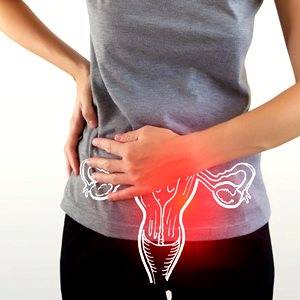


Chronic pelvic pain is pain in the area below your belly button and between your hips that lasts six months or longer. Chronic pain can come and go, or it can be constant. Sometimes chronic pelvic pain follows a regular cycle. For example, it may occur during menstruation, before or after eating, while urinating, or during sex. It can be a symptom of another disease, or it can be a condition in its own right. Consult Dr. Sourav for pelvic pain treatment now.
a. Dull Aching pain in lower abdomen, that could be continuous or intermittent.
b. Sharp pains or cramping.
c. Pressure or heaviness deep within your pelvis.
d. Pain during intercourse.
e. Pain while passing motion or urinating.
f. Pain when you sit for long periods of time.
g. Associated symptoms like fever, nausea, vomiting, painful urination, painful intercourse, etc.
– Endometriosis
– Interstitial cystitis or Bladder pain syndrome
– Menstrual pain and cramps
– Pelvic inflammatory disease or PID
– Cystitis or urinary tract infections UTI
– Sexually transmitted infections STDs
– Appendicitis
– Ectopic pregnancy
– Tumors
Investigations:
• Ultrasound of Pelvis area
• Diagnostic Laparoscopy
• Cystoscopy
• Colonoscopy
• Sigmoidoscopy
Treatment: Usually the treatment of primary disease is done by a gynaecologist or Urologist or general surgeon. But if a patient is suffering from pain which is not relieved by conservative management, then urgent referral to Interventional pain management specialist is required.
Pain management:
– Assessment and localization of Pain generator.
– Optimization of dose of analgesics, neuropathic pain medicines.
– Pelvic floor exercises.
– If not relieved, then.
a. Superior Hypogastric plexus block under Fluoroscopy or US guidance.
b. Ganglion impar block or RFA under Fluoroscopy or US guidance.
c. Trigger point injection or Botulinum toxin injection of Pelvic Floor muscles (EMG guided).